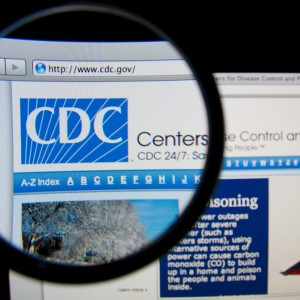 The Morbidity and Mortality Weekly Report recently included a study from Centers for Disease Control and Prevention (CDC) entitled “Invasive Cancer Incidence and Survival — United States, 2011” published by senior author Dr. Jane Henley, an epidemiologist, from the Division of Cancer Prevention and Control at CDC, reporting that two out of 3 individuals diagnosed with cancer survive 5 or more years. The data represents some of the most recent and accurate findings on survival rates for the disease, which includes Colon Cancer
The Morbidity and Mortality Weekly Report recently included a study from Centers for Disease Control and Prevention (CDC) entitled “Invasive Cancer Incidence and Survival — United States, 2011” published by senior author Dr. Jane Henley, an epidemiologist, from the Division of Cancer Prevention and Control at CDC, reporting that two out of 3 individuals diagnosed with cancer survive 5 or more years. The data represents some of the most recent and accurate findings on survival rates for the disease, which includes Colon Cancer
Cancer is the main cause of disease in the United States. Due to improvements in earlier diagnosis and therapies for cancer, the percentage of subjects living after a cancer diagnosis has increased over the past decades. In 2011, in the US (excluding Nevada) 1,532,066 new cases of invasive cancer were diagnosed with an incidence rate of 508 cases per 100,000 among males and 410 among female, according to the National cancer surveillance data.
In this study, the authors reported that the most frequent types of cancer are prostate (128 cases), female breast (122 cases), lung and bronchus (61 cases), and colon and rectum (40 cases) per 100,000 individuals. Within these cancers, 5-year relative survival is 97% for prostate cancer, 88% for breast cancer, 63% for colorectal cancer, and 18% for lung cancer.
“We are pleased to include cancer survivor data in this report for the first time. We will review these data annually to track our progress,” said Dr. Jane Henley in the news release.
The researchers reviewed the most up to date findings on cases of invasive cancers — cancer that has extended to adjacent normal tissue — registered during 2011. The cancer survival estimates were obtained from CDC’s National Program of Cancer Registries. They found that cancer incidence varied depending on gender and race, with greater frequency among men and higher among black individuals. Moreover, after cancer diagnosis the 5-year relative survival was lower for blacks (60%) than for whites (65%). The incidence according to different states also varies for all types of cancer.
Dr. Lisa Richardson, director of CDC’s Division of Cancer Prevention and Control, highlighted the importance of this report as a reminder that every individual should have access to care from early diagnosis to therapy to survive cancer. “We know, for example, that early detection of colorectal cancer has had the largest impact on long-term survival rates,” concluded Dr. Richardson.
These findings help identify population groups with high cancer incidence rates and low cancer survival rates that might largely benefit from specific prevention and control strategies.


